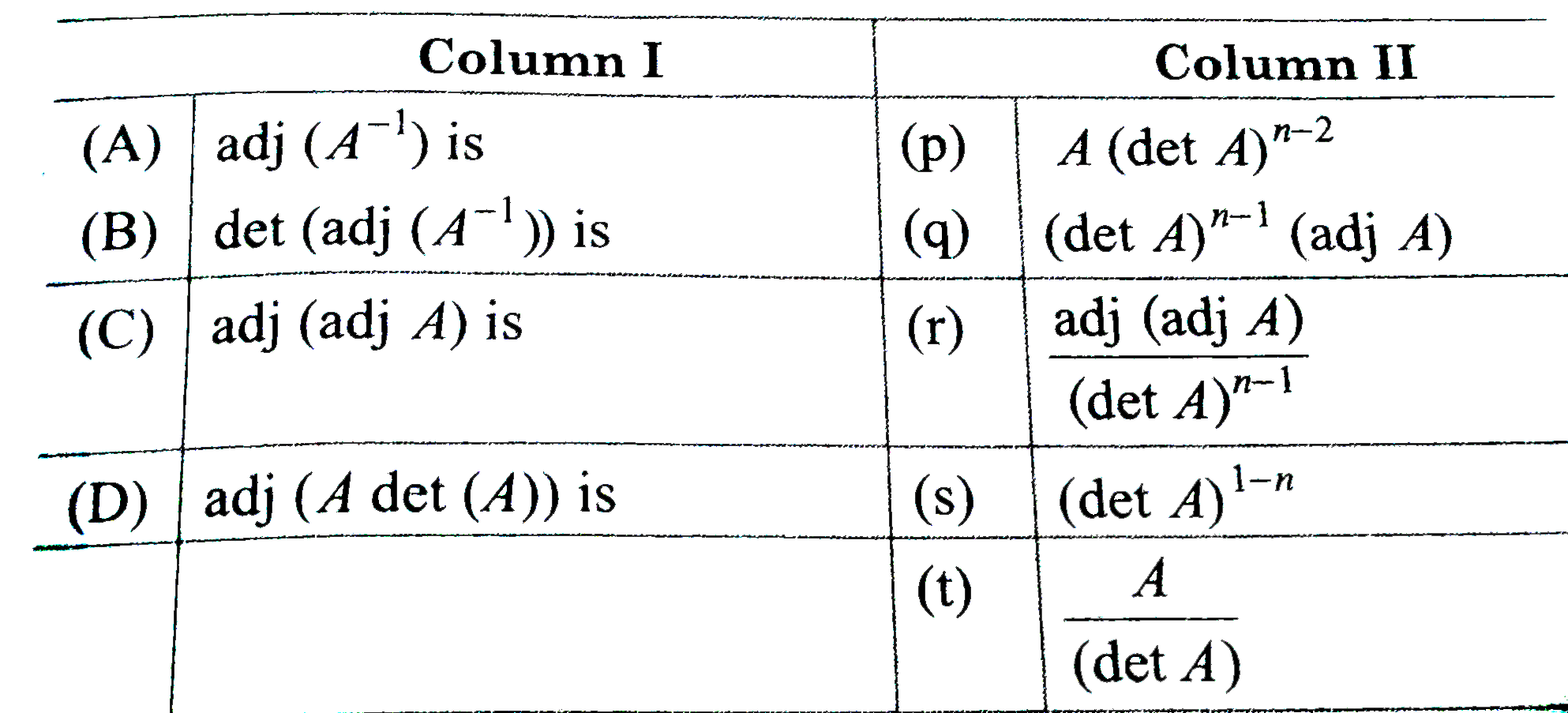If A and B are non- singular square matrix of same order 3×3, then which of the following options is correct?
|adj(AB)|=|A||B|
∣∣(adjAB)−1∣∣=|adj(AB)|
∣∣adj(AB)−1∣∣=∣∣adj(AB)−1∣∣
∣∣adj(AB)T∣∣=|AB|−2
The correct Answer is:C
To solve the problem, we need to analyze the properties of non-singular square matrices and their determinants, particularly focusing on the adjoint and inverse operations.
1. Understanding Non-Singular Matrices:
- A non-singular matrix is one that has an inverse. For a matrix A of order n, if det(A)≠0, then A is non-singular.
2. Properties of Determinants:
- For any two n×n matrices A and B:
det(AB)=det(A)⋅det(B)
- The determinant of the adjoint of a matrix A is given by:
det(adj(A))=(det(A))n−1
- For a 3×3 matrix, this becomes:
det(adj(A))=(det(A))2
3. Analyzing the Options:
- Option A: adj(AB)=det(A)⋅det(B)
- This is incorrect because adj(AB)=adj(A)⋅adj(B) and not equal to the product of the determinants.
- Option B: det(adj(AB−1))=adj(A)⋅adj(B)
- This is also incorrect. The correct relation involves the determinant of the adjoint and the determinant of the inverse, which leads to a different expression.
- Option C: adj(AB−1)=adj(A)⋅adj(B−1)
- This is correct. The adjoint of the product of matrices is the product of their adjoints in reverse order.
4. Conclusion:
- After evaluating the options, we find that the correct statement is:
adj(AB−1)=adj(A)⋅adj(B−1)
- Therefore, the correct answer is Option C.
- A non-singular matrix is one that has an inverse. For a matrix A of order n, if det(A)≠0, then A is non-singular.
- For any two n×n matrices A and B:
det(AB)=det(A)⋅det(B)
- The determinant of the adjoint of a matrix A is given by:
det(adj(A))=(det(A))n−1
- For a 3×3 matrix, this becomes:
det(adj(A))=(det(A))2
- Option A: adj(AB)=det(A)⋅det(B)
- This is incorrect because adj(AB)=adj(A)⋅adj(B) and not equal to the product of the determinants.
- Option B: det(adj(AB−1))=adj(A)⋅adj(B)
- This is also incorrect. The correct relation involves the determinant of the adjoint and the determinant of the inverse, which leads to a different expression.
- Option C: adj(AB−1)=adj(A)⋅adj(B−1)
- This is correct. The adjoint of the product of matrices is the product of their adjoints in reverse order.
- After evaluating the options, we find that the correct statement is:
adj(AB−1)=adj(A)⋅adj(B−1)
- Therefore, the correct answer is Option C.
Topper's Solved these Questions
Similar Questions
Knowledge Check
If A and B are two non-singular square matrices such that AB = A, then which one of the following is correct ?
AB is an identity matrixBB=A−1CB=A2DDeterminant of B is zeroIf A is a square matrix of order 3 with |A|≠0, then which one of the following is correct ?
A|adjA|=|A|B|adjA|=|A|2C|adjA|=|A|3D|adjA|2=|A|Let A be a non-singular square matrix of order 3×3. Then |adjA| is equal to
A|A|B|A|2C|A|3D3|A|
If A,B are non-singular square matrices of same order; then adj(AB)=(adjB)(adjA)
View SolutionIf A and B are two square matrix of order 3×3andAB=A,BA=B then A2 is:
View SolutionIf A is non-singular matrix of order, n×n,

View SolutionIf A is a non - singular ,square matrix of order 3 and |A| =4 ,then the valie of |adj A| is :
View SolutionIf A is a non-singular matrix of order 3, then ∣∣adjA3∣∣=
View Solution
